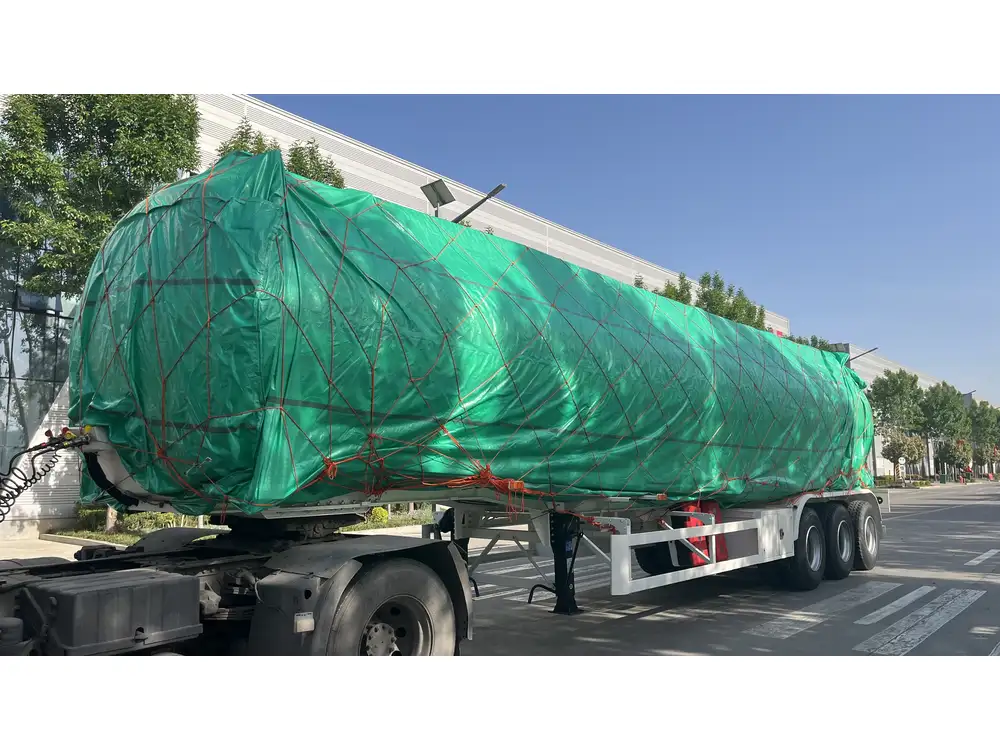When considering the vital aspects of semi-truck operations, one critical element is the weight of the semi-tractor trailer itself. The weight carries implications for regulatory compliance, safety, payload capacity, and operational efficiency. In this article, we delve into the complexities surrounding the weights of semi-tractor trailers, while providing valuable insights for fleet operators, manufacturers, and logistics professionals.
What is a Semi-Tractor Trailer?
A semi-tractor trailer, commonly known as a truck or lorry, is a combination of a tractor unit (the front part) and a semi-trailer (the rear part). The tractor is equipped with a powerful engine designed for towing, while the semi-trailer is designed to carry the cargo. The unique configuration allows for flexibility and efficiency in transporting goods across long distances.
Weight Classifications: The Basics
The weight of a semi-tractor trailer can be classified into several categories, each playing a pivotal role in the trucking industry:
| Weight Classification | Description |
|---|---|
| Unladen Weight | The weight of the truck and trailer without any cargo. |
| Gross Vehicle Weight (GVW) | The total weight of the vehicle, including cargo and all accessories. |
| Gross Combination Weight (GCW) | The combined weight of a tractor unit and its attached trailer, both laden and unladen. |
| Payload Capacity | The maximum weight of cargo that a vehicle can safely carry. |

Average Weights of Semi-Tractor Trailers
A thorough understanding of the average weights of semi-tractor trailers is crucial for compliance with federal and state regulations. Here, we provide insights into typical weights under various conditions:
1. Empty Semi-Tractor Weight
The unladen or empty weight of a semi-tractor trailer varies significantly depending on the make, model, and specific configurations. Generally:
- Standard Semi-Tractor: Approximately 15,000 to 20,000 pounds (6,800 to 9,100 kg).
- Lightweight Models: Can weigh as little as 12,000 pounds (5,400 kg).
2. Fully Loaded Weights
The combined weight of a fully loaded semi-tractor trailer depends on the cargo and specifications. A fully loaded semi-trailer often ranges between:
- Legal Limit: Most states allow a maximum combined weight of about 80,000 pounds (36,287 kg) for a truck and trailer.
- Typical Load: A common operational weight can vary from 60,000 to 80,000 pounds (27,200 to 36,287 kg), depending on the cargo.

3. Examples of Cargo Weights
When analyzing the weights of various cargo types that can be transported, consider the following examples:
| Cargo Type | Estimated Weight per Load |
|---|---|
| Automobiles | 3,000 – 4,500 pounds |
| Construction Materials | 10,000 – 40,000 pounds |
| Food Products | 10,000 – 50,000 pounds |
| Furniture and Appliances | 5,000 – 15,000 pounds |
Key Regulations Affecting Weights
Regulatory constraints are pivotal for the trucking industry. Awareness of the laws governing weight limits is fundamental to safe operations:
Federal Regulations
Under the Federal Motor Carrier Safety Administration (FMCSA) guidelines, the maximum weight limits for trucks are as follows:
- Single Axle Load Limit: 20,000 pounds (9,072 kg)
- Tandem Axle Load Limit: 34,000 pounds (15,422 kg)
- Gross Weight Limit: 80,000 pounds (36,287 kg) combined weight for the vehicle and cargo.

State Regulations
In addition to federal mandates, each state enforces its own regulations, which may include:
- Bridge Laws: Regulations governing the weight distribution across axles to prevent roadway damage.
- Permits: States may require special permits for overweight or over-dimension loads.
Factors Influencing Semi-Tractor Trailer Weight
Understanding the factors that influence the weight of a semi-tractor trailer is critical for fleet management:
1. Design of the Trailer
Different trailer designs carry varying weights. For example:
- Flatbed Trailers: Generally lighter due to their simplistic design.
- Reefer Trailers: Heavier because of added cooling units.

2. Materials Used in Construction
The materials utilized in constructing both tractors and trailers can significantly affect weight. Emerging technologies and materials allow manufacturers to produce lighter yet strong vehicles. Consider:
- Aluminum: Commonly used for trailers, reducing total weight.
- Steel: Often favored for its strength, yet adds additional weight.
3. Additional Equipment
Equipment like refrigeration units, hydraulic lifts, and storage boxes can increase the weight of the trailer. Fleet operators must account for these increments when calculating total vehicle weight.
Safety and Efficiency Considerations
Maintaining compliance with weight regulations is crucial for safety and operational efficiency. Overloaded vehicles pose significant risks, including:
- Increased Stopping Distances: Heavier loads require longer stopping distances, increasing the potential for accidents.
- Tire Wear: Excessive weight can lead to faster tire degradation, raising maintenance costs.

Steps for Optimizing Weight Management
To maximize safety and efficiency, consider implementing these strategies:
- Regular Weighing: Use portable scales to monitor the weights of trucks regularly.
- Load Distribution: Ensure optimal load distribution across axles to comply with bridge laws and promote stability.
- Driver Training: Offer training programs focusing on loading techniques and regulations.
Conclusion: The Importance of Weight Awareness in the Semi-Tractor Trailer Industry
As semi-tractor trailers play a crucial role in global trade and transportation, understanding their weights is essential for compliance, safety, and efficiency. By knowing the various weight classifications, average weights, influencing factors, and regulatory constraints, businesses can optimize their fleets for better performance while adhering to legal requirements.
Being aware of one’s semi-tractor trailer weight isn’t merely an exercise in regulation compliance; it’s an operational philosophy that enhances safety, lowers costs, and boosts productivity. Ultimately, by prioritizing conscientious weight management, fleet operators can drive towards a safer and more efficient future in the trucking industry.
By equipping ourselves with comprehensive knowledge, we enhance our capabilities in tackling the vast challenges of the transportation sector, ensuring we remain leaders in the semi-trailer manufacturing industry.



